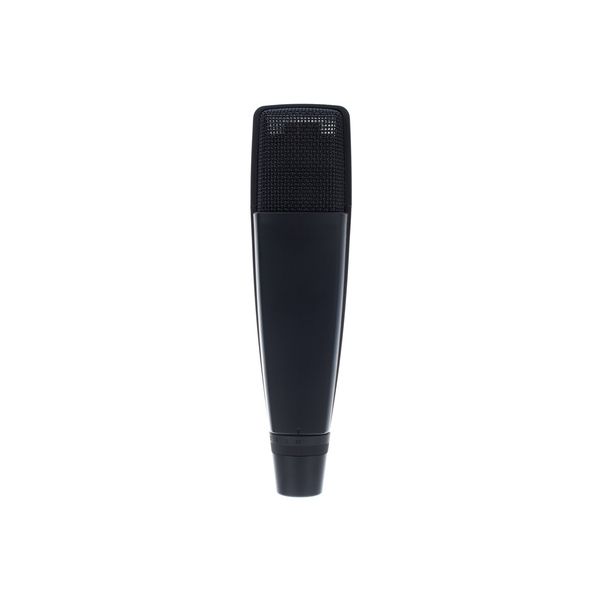Und es hält doch: Einmal in Position gebracht, hält das Mic seine Position! Das hätte ich diesem unseligen Plastikstengel, der es tragen soll, zunächst nicht zugetraut. Ob ich dieses Relikt einem Kultzwang zu verdanken habe oder die Halterung tatsächlich praktische Vorzüge hat, konnte ich nicht feststellen. Zumindest fand ich sie nicht unpraktisch, aber mehr Metall als Plastik wäre mir lieber gewesen.
Stengel hin oder her - der Klang entscheidet. Und hier beginnt das Problem: Die Streuung der beiden zeitgleich erworbenen Mikrofone war überdeutlich. Das bedeutete in meinem Fall, dass sich die zwei Mikros im selben Maße unterschieden, wie sie sich von gänzlich anderen dynamischen Mikrofonen abhoben. Das eine Mikrofon begeisterte mich vor allem durch eine schönfärbende Präsenz bei gleichzeitig absolut weichen unaufdringlichen Zischlauten: Hervorragend für Sprache, ziemlich ausgewogene Richtcharakteristik. Allerdings lag der Ausgangspegel nur auf dem Niveau eines RE-20.
Das andere Mikrofon hatte einen deutlich höheren Ausgangspegel (ca. 5dB), erforderte aber generell eine recht schmale Absenkung um 4 kHz, um annähernd die Qualitäten des ersten zu erreichen (auch hier allerdings die Richtcharakteristik sehr ausgewogen).
Das zweite Mikrofon ging zurück. Ob es sich um einen Defekt handelte, kann ich nicht sagen; der Messschrieb jedenfalls bewegte sich gerade am Rand der laut Daten noch zulässigen Toleranzen. Diese allerdings sind sehr weit gefasst. Zu weit, um sich des Mikrofoncharakters beim Erwerb sicher zu sein: Hören und aus mehreren baugleichen Exemplaren auswählen ist nötig.
Bei der Abnahme von E-Gitarren zeigte sich das Vorzugsexemplar freundlich, aber ebenfalls recht präsent.
Mein Fazit: Ein hervorragendes Mikrofon für Sprache und auch E-Gitarren - wenn man denn ein gutes Exemplar erwischt.






